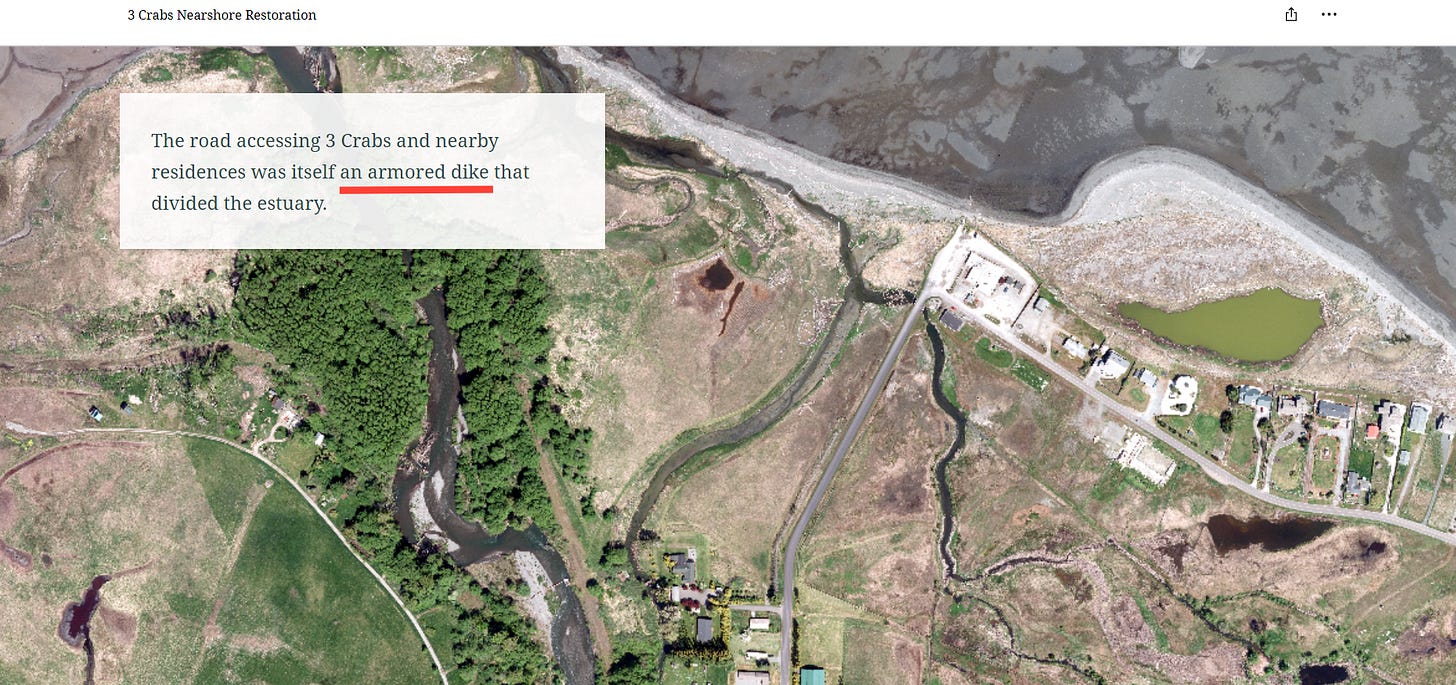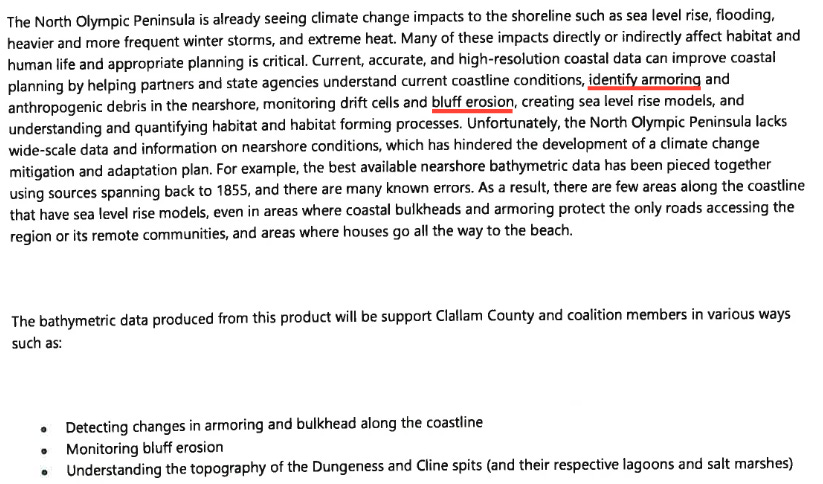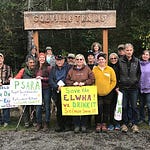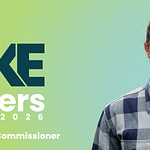It was a revealing week in Clallam County government, as Commissioners addressed flooding in Dungeness, advanced a new coastal mapping project with tribal and state partners, and—without prior notice—discussed a major shakeup in youth behavioral health services.
3 Crabs Road update
At Tuesday’s work session, Clallam County Commissioners were briefed on seasonal flooding along 3 Crabs Road, the sole access point for about 600 residents north of Sequim. Residents say the flooding has worsened since the County and the Jamestown S’Klallam Tribe removed an armored dike during the Meadowbrook Creek estuary restoration.
An alternative grant has been identified to study long-term solutions, but road department staff said decisions likely won’t come until late summer. Until then, residents are preparing for yet another year of inundation.
Later that day, during the regular Board meeting, Commissioners approved an update to the 3 Crabs Road grant application. Longtime resident Patricia McCauley offered public comment linking the increased flooding to the estuary project. She shared that she has lived on 3 Crabs Road for 40 years, in several locations. Her first home—a duplex—had never experienced flooding until after the dike was removed.

McCauley now lives in Dungeness Beach Estates, a neighborhood originally developed by a registered tribal member. “One of the county advisory committees recently suggested that we all pay reparations to the tribe for our ownership,” she said. “Well, 140-plus property owners in our section have already compensated a tribal member.”
She criticized the County’s lack of public engagement, saying, “Instead we are talked around, and about, as if we are to blame for our situation. The County issued the building and septic permits and happily collects our property taxes.” McCauley estimated those taxes total over $1 million annually for the neighborhood. “You are impacting real people with real property, and we deserve much better. With respect and conversation, you will get cooperation.”
LIDAR mapping: Shorelines, shellfish, and bluff monitoring
Habitat Biologist Cathy Lear reported that the County is partnering with the Jamestown S’Klallam Tribe and Washington Sea Grant to launch a high-resolution LIDAR mapping project covering 209 miles of coastline from Neah Bay to Port Townsend. LIDAR (Light Detection and Ranging) uses laser pulses to produce precise elevation data and is widely used for climate adaptation planning.
Washington Sea Grant, which will coordinate the project, includes tribal leaders like Laural Ballew (Swinomish) and Chad Bowechop (Makah) on its advisory committee. The Jamestown S’Klallam Tribe is providing technical expertise.
Washington Sea Grant is headquartered at the University of Washington.
Lear said the data will help identify shoreline armoring, estuarine changes, bluff erosion, and sea level rise, and will inform updates to the County’s Shoreline Master Program. Director of Community Development Bruce Emery said it would serve as a “baseline for monitoring shoreline changes that may happen as a result of climate change.”
In addition to climate resilience, the mapping will expand the Tribe’s capacity to monitor the effects of prior restoration efforts, such as the Meadowbrook Creek project, and to plan future commercial and subsistence shellfish harvests, including those in the Dungeness National Wildlife Refuge.
Critics note an irony: the County is now working with the same sovereign nation whose earlier estuary project contributed to flooding in a residential area—and is now requesting grant assistance to address it. Some question whether this partnership may give the Tribe disproportionate influence over coastal policy. The Tribe has shown interest in bluff-front real estate and has even rated parcels by owners’ vulnerability and willingness to sell.
True Star youth program on the chopping block
In an unexpected move, Commissioner Mike French brought up a sensitive issue not on the public agenda: the future of the True Star Behavioral Health program at Juvenile Services. Because the discussion was unannounced, concerned community members and staff were unable to attend.
In a written statement to CC Watchdog, one employee described an unsettling internal meeting between Sheriff's Office representatives and True Star staff:
“Recently, a few individuals including Todd Mielke, Loraine Shore, and Don Wenzl from the Sheriff's Office met with staff at True Star Behavioral Health at Juvenile Services. During this meeting, our long-standing, state-licensed youth treatment services were astonishingly declared ‘not a mandatory service.’”
According to the statement, the Sheriff's Office plans to assume the license and rebrand the program as “Clallam County Behavioral Health.” Staff were reportedly told they must reapply for “re-entry care coordinator” roles, which would eliminate direct counseling duties in favor of administrative work—mainly Medicaid signups and re-entry coordination for juvenile and adult inmates.
The employee wrote:
“This entire process feels like a ‘strong-arm’ tactic to dismantle an effective, established youth treatment program, and the broader Juvenile Services under the guise of reorganization. It appears designed to cut costs or consolidate power, potentially at the expense of professional behavioral health care and the well-being of our youth.”
Founded in 1998 to fill a gap in local youth services, True Star is the largest youth treatment program in Clallam County. It offers outpatient care, drug court case management, dual diagnosis counseling, and family therapy. The program received consecutive state and federal grants from 2012–2019, with strong outcomes in reducing substance use, juvenile justice involvement, and improving family stability and social connectedness. Even after the grants ended, its evidence-based practices continued.
The program’s sudden restructuring, with no formal agenda notice or public discussion, has fueled growing concerns about transparency and fiscal priorities in Clallam County government.
Frisbees and mascots: Harm reduction purchases approved
In other business, Commissioners approved new promotional purchases for the County’s Harm Reduction Center, which distributes free syringes, meth pipes, and crack pipe cleaning kits. The center uses giveaways to encourage participation in its services. This week’s approved items included $3,324.91 for custom frisbees, $2,240.12 to The Mascot Store, which sells costumes, and $200.20 for pizza to feed addicts who visit HOPS (Harm reduction Overdose Preventions Services).



















